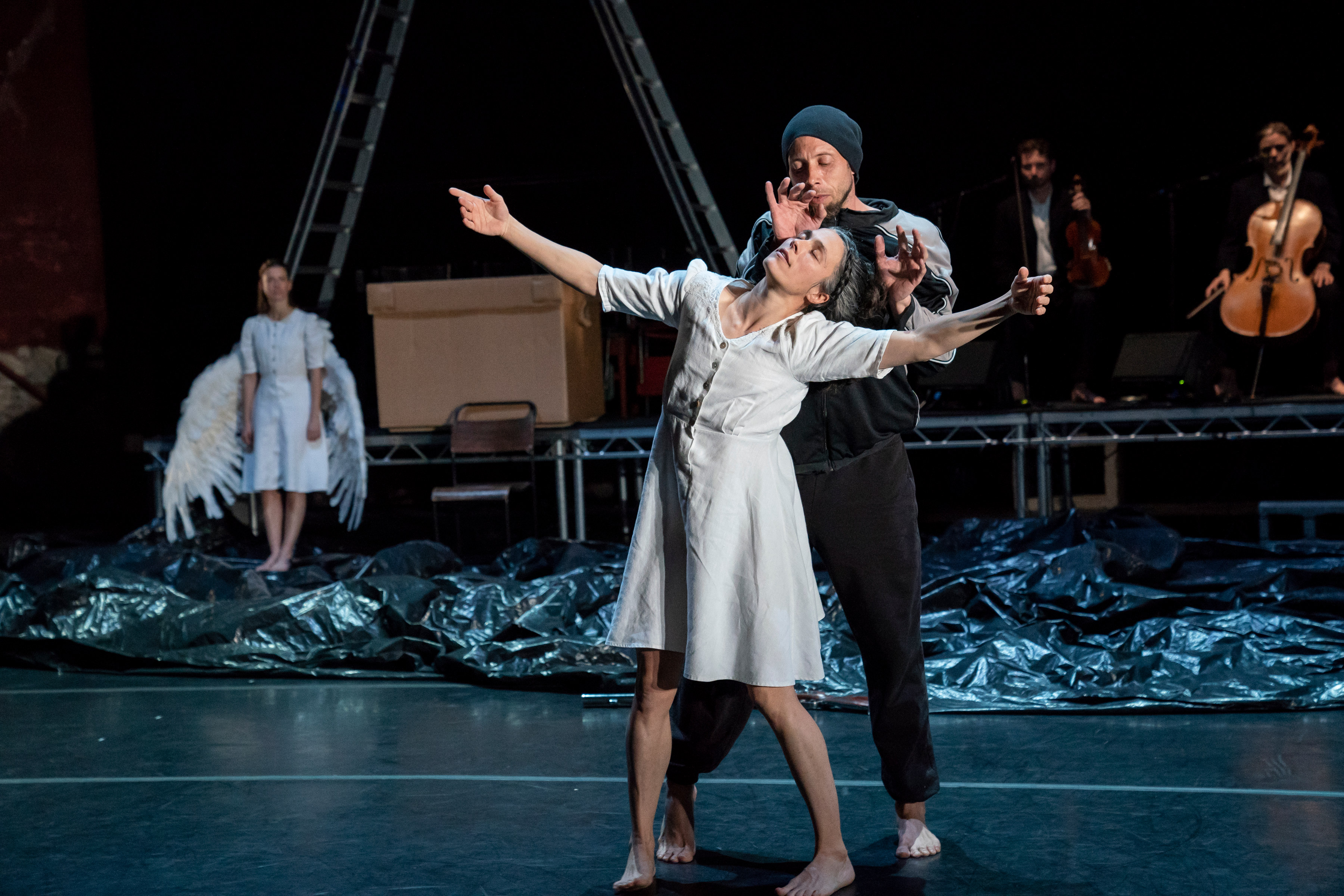Swan Lake/Loch na hEala by Teac Damsa, written, directed and choreographed by Michael Keegan-Dolan at BAM Harvey Theater, Brooklyn, NY. Words by Giordana Patumi.
Growing up watching the black swan ballerina’s fouettes, we must have forgotten what is behind the original tale of Swan Lake: darkness.
Last night, at the opening performance of the Next Wave season at Brooklyn Academy of Music, Michael Keegan-Dolan and the entire cast of Teac Damsa, reminded it to us.
Swan Lake/Loch na HEala is a profound, powerful and confrontational performance in which music, dance, and text coexist and narrate an Irish drama eternal in its nature.
The performance is impressed with a strong Irish identity (one of the main objectives as to why Keegan-Dolan created this company.) Its music and folk culture are very present; yet the story is universal – as is Swan Lake. To embrace it you don’t need to know Gaelic or Irish dialects.
Set on the Irish Midlands, this is the story of Jimmy who is affected by a deep dark depression and grief that nobody seems to understand; not even his worried mother bound to a wheelchair, who throws him a birthday party. Those around Jimmy do not understand his condition of pain and misery. The only thing they force him into is to change and bleakly move forward.
It is also the story of a priest who abuses the young Finola. She is not the Princess Odette we’ve seen in ballets and fairytales, but just a young country girl turned into a wild, beastly swan by the priest who abused her.
Down on the lake and pondering suicide Jimmy meets the swans. The protagonist never joins the collective dance until he meets the Swan/Finola; the couple dances an intimate duo, where the fragility of the characters comes out. The swans are the escape and the change we are forced to make during a time of depression; they are white like a candid light in the dark face of our own grim condition.

The entire piece is very dark, with small melancholic moments of laughs. But surprisingly, it ends with a joyful motif.
If, from one side, the piece portrays our incapacity to deal with mental illness, from the other, the darkness is, as the director says, “There to teach us something. Don’t be afraid of the dark, it is your friend.”
Yes we are part of Jimmy’s drama, but the piece teaches us to embrace our obscurer side too: “…Sickness often requires a fundamental change to move it… Nature’s forces are constantly moving, seeking to find the balance so that life can continue to endlessly unfold. When depression visits us it is asking us to change.”
The staging is inventive, and the music acts as climax during the entire performance. But it is uplifted in the final scene with the composition: ‘Swansong/Starfall’. The entire group of dancers is devoted, their moves are extremely precise and they never try to prevaricate on any other art forms that share the stage with them.
Mikel Murfi is incredible, opening the performance as a human-goat whilst the audience enters the theatre and narrating the entire Loch na hEala.
This modern rural Ireland mingled with Irish mythology collides with the tradition of Swan Lake as a metaphor for life. The audience was captivated and a few people could not stop themselves from tears.
Teac Damsa is embracing the tradition, while joining it with our modern days. The company will now be carrying a North American tour with Swan Lake/Loch na HEala, and Europe can look forward to their new creation Mám that recently premiered at the Dublin Theatre Festival.
Images: Stephanie Berger.